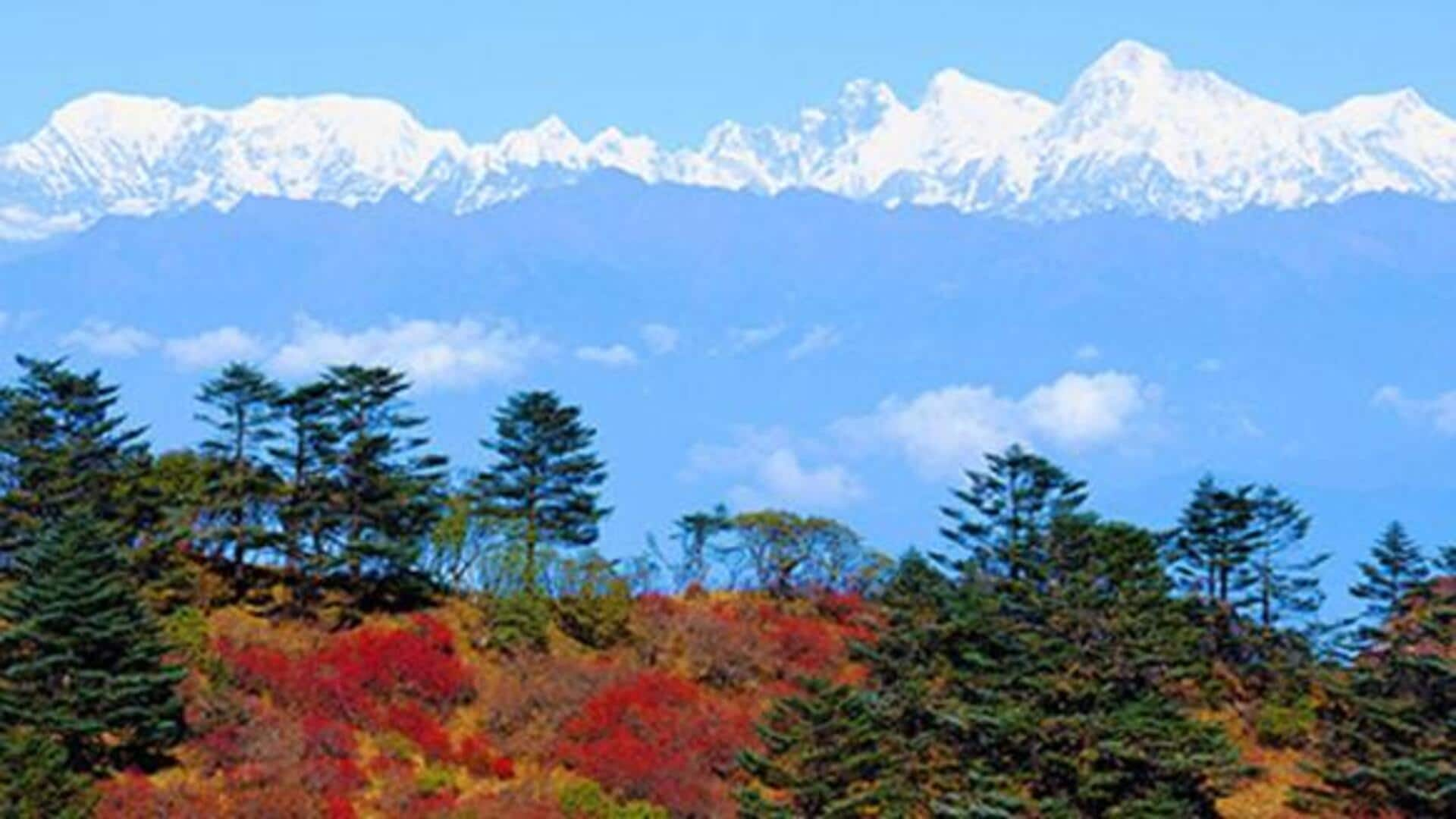
Trek through Singalila National Park, India's hidden gem
What's the story
Singalila National Park, located in the eastern Himalayas of West Bengal, India, is a place where nature's grandeur meets the soul's serenity. Famed for its vibrant rhododendron forests, exotic wildlife, and breathtaking views of the snow-clad Himalayan peaks, this park is a paradise for trekkers and nature enthusiasts. The presence of peaceful monasteries within the park further enhances its spiritual charm.
Trekking
Embark on a scenic trek
The highlight of Singalila is undoubtedly its trekking trails, which provide stunning views of the Kanchenjunga range and Everest. The most well-known among tourists is the Sandakphu-Phalut trek. Lasting four to five days, this trek leads you through beautiful rhododendron forests bursting with color in spring and charming villages. It's an adventure that combines physical challenge with the reward of witnessing nature's unparalleled beauty.
Flora
Explore vibrant rhododendron forests
From late April to early June, Singalila becomes a veritable wonderland as the rhododendron forests burst into vibrant bloom. Hiking through these forests is like entering a living painting, with brilliant reds, pinks, whites, and purples surrounding you on all sides. This floral extravaganza isn't just a feast for the eyes; it also creates a unique habitat for a variety of birds, making it an ideal time for birdwatching.
Monasteries
Visit tranquil monasteries
Dotted along the Singalila Ridge are numerous Buddhist monasteries that provide a window into the region's spiritual way of life. Most prominent among them is the Tumling Monastery. Here, tranquility envelops you as you find yourself surrounded by vibrant murals telling stories of Buddhist mythology. These monasteries are ideal for meditation or just unwinding in serenity, far removed from the city's hustle and bustle.
Wildlife
Witness exotic wildlife
Singalila is home to a diverse range of flora and fauna, with red pandas and clouded leopards being the stars of the show. The ideal time for wildlife spotting is from March to May, when animals are actively foraging for food before the monsoon hits. And, most importantly, jeep safaris ensure a responsible way of observing animals without intruding on their natural habitats.